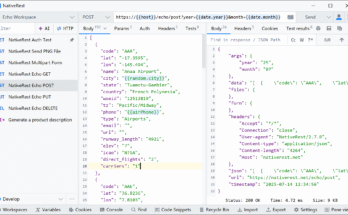Public school systems often have a limited budget for cybersecurity and have become the target of further attacks.
Amid growing growing reliance on technology due to the coronavirus epidemic, cyberattack attacks have become a growing threat to schools across the United States – leading to the closure of schools and the need for additional funding to address the problem.
Since last year, when many schools relied heavily on technology to keep up with the epidemic, many high-profile cases were reported, leading to school officials cracking down on data recovery or deleting all laptops.
KEEP READING
list of 3 items
list 1 of 3
India uses cyber volunteers to silence sensitive words: Report
list 2 of 3
Meta closes ‘cyber-mercenaries’ targeting 50,000 people
list 3 of 3
China will involve firms in cybersecurity testing ahead of foreign IPOs
end of list
“Either way, incidents have been increasing more and more important,” said Doug Levin, director of the K12 Security Information Exchange, a Virginia-based nonprofit organization that helps schools protect against cybersecurity, he told the Associated Press. .
Accurate data is hard to come by as many schools are not required to publicly report cyber attacks. But experts say public school programs – often with limited budget cybersecurity technology – have become the focus of inviting ransomware gangs.
School programs that have been disrupted by education include those in Baltimore County, Maryland and Miami-Dade County, Florida and the states of New Jersey, Wisconsin and elsewhere.
Levin’s team has tracked more than 1,200 cybersecurity incidents since 2016 in public school districts across the country. They include a 209 ransomware attack, in which hackers shut down data and charge to unlock it; 53 “service denial” attacks, in which attackers damage or delay the network at the request of the server; 156 “Zoombombing” incidents, when an unauthorized person enters a video call; and more than 110 cybercrime attacks, in which a deceptive message tricks a user into letting a hacker hack into his network.
According to a report by the K-12 Cybersecurity Resource Center, an organization that monitors cybersecurity attacks in US schools, by 2020 alone, there have been cybersecurity attacks in more than 400 schools, a number that experts say is too small.
The new details come amid growing challenges to keep schools open in the US, amid growing recent coverage of COVID-19 cases due to the wide range of Omicron variations. President Joe Biden has promised to keep schools open, saying the importance of personal study in children’s education, and has increased school sponsorship of tests, masks and hygiene regulations.
In October, Biden signed the K-12 Cybersecurity Act, demanding that the federal cybersecurity agency make recommendations on how to help school programs better protect themselves.
“The global epidemic has affected every generation of students and teachers and emphasizes the importance of protecting their sensitive information, as well as of all Americans,” Biden said at the time. “This law is an important step forward in meeting the ongoing threat posed by criminals, violent players, and your online counterparts.”
In New York City, after this month’s attack on third-party software vendor Illuminate Education, teachers across the city were unable to reach the marks. Local media reported that the cut has added to the pressure on teachers who are already busy enforcing COVID-19 policies and covering their sick or isolated colleagues.
Last year, the FBI issued a warning about a group called the PYSA, or “Protect Your System, Amigo,” claiming that it was seeing an increase in attacks on schools, colleges, and seminaries. Other rescue teams included Conti, who last year demanded $ 40m from Broward County Public Schools, one of the country’s top officials.
Most are Russian-speaking groups based in Eastern Europe and enjoy a safe haven from tolerant governments. Some will post files on the black web, including very sensitive information, if they are not paid.
While the attacks on larger districts have more headlines, rescue gangs tend to target smaller school districts in 2021 rather than 2020, according to Brett Callow, a threat analyst at Emsisoft. He said that could indicate that larger districts are increasing their spending on cyber security while smaller districts, which have less money, are still at high risk.



